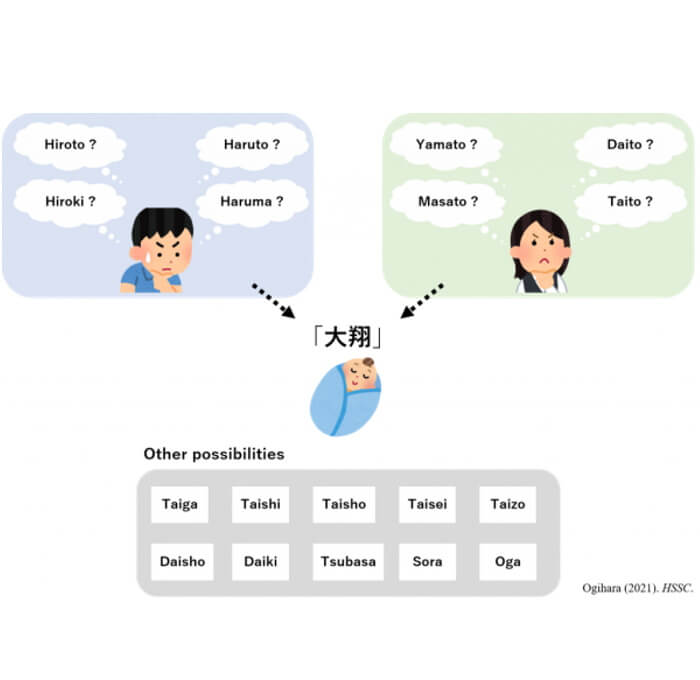Tokyo University of Science

Assistant Professor Ogihara discovered that there are at least 18 ways to read “大翔” (Figure 2), and at least 14 ways to read “結愛” (Figure 3). Even single-character names like “颯,” and “杏,” had seven and five readings, respectively. The readings each differed greatly in pronunciation, length, and meaning. Assistant Professor Ogihara showed that the other names have many readings, too.
He further found that parents were not only using the common readings of each character, but also using readings that do not exist for a character or using a character for its meaning and imagery. For example, “大翔” was also read as “Tsubasa”(meaning “wing”). Neither “大” nor “翔” formally have “Tsubasa” as a reading. “翔” is read as “Tsubasa” because it has the meanings “flap” and “fly,” and a reading associated with the imagery of the character is observed. The character “大” is given, but not pronounced, and the meaning “to flap broadly” is obtained. Hence, the character is only added for its imagery or meaning.
Assistant Professor Ogihara also saw a pattern of abbreviating common readings. For example, “大翔” was read as “Taishi.” “大” has the reading “tai,” and “翔” has the reading “shou.” “Shou” was abbreviated to “shi” and combined with “tai.” He also found instances where the meanings of characters are read in foreign languages. Take “結愛 Yura,” for example. While “結” comes from the common reading “yu(u),” “愛” is generally not read as “ra,” but because “愛” means “love” (rabu) in English, it is possible to omit the “bu” and use it as “ra.”
In this study, Assistant Professor Ogihara systematically analyzed actual name data and empirically investigated the difficulty of correctly reading Japanese names. The investigation of these difficulties contributes to deepening our understanding of naming practices and the characteristics of names, not only in Japan but in the Sinosphere, which includes East and Southeast Asia.